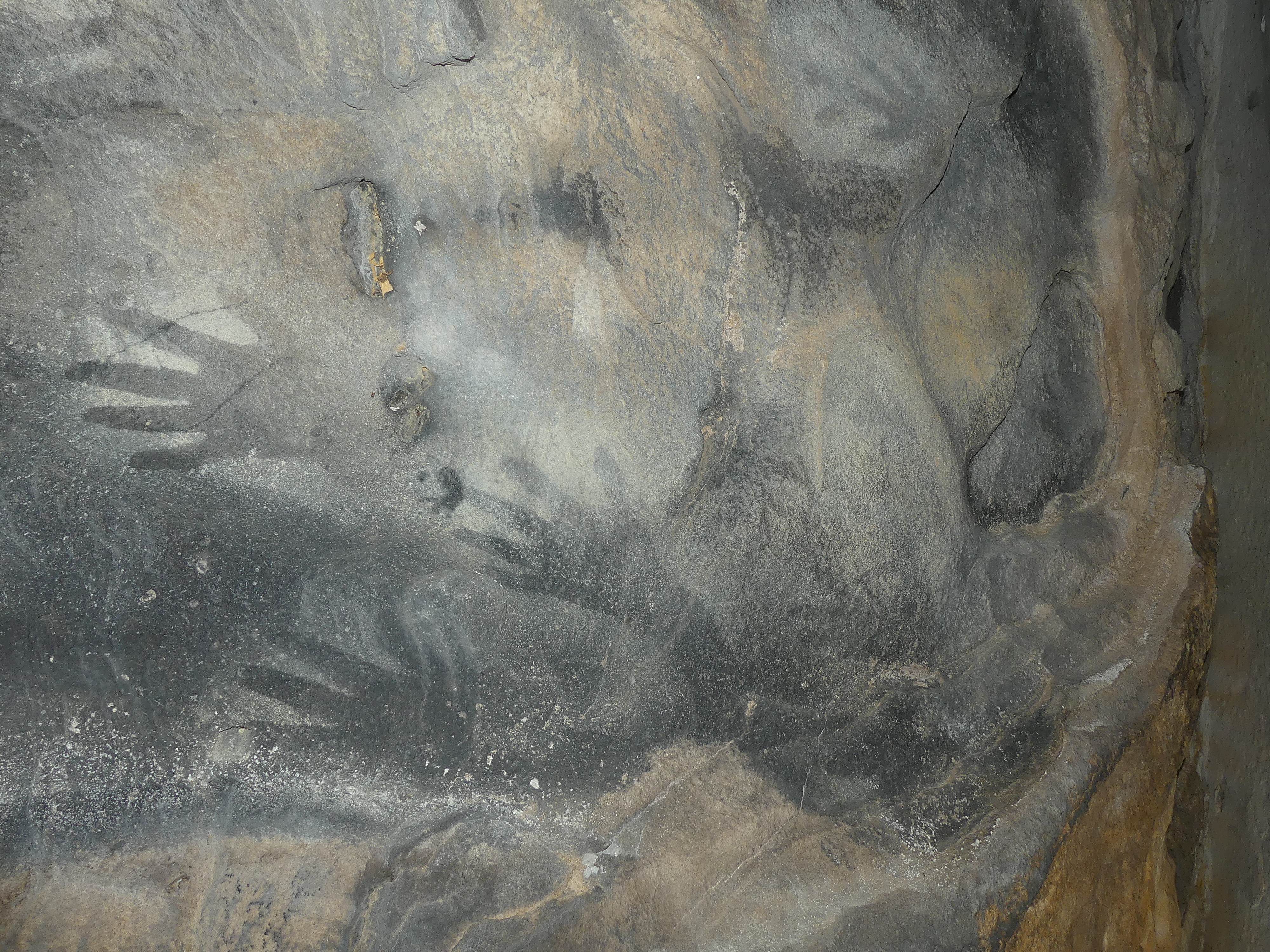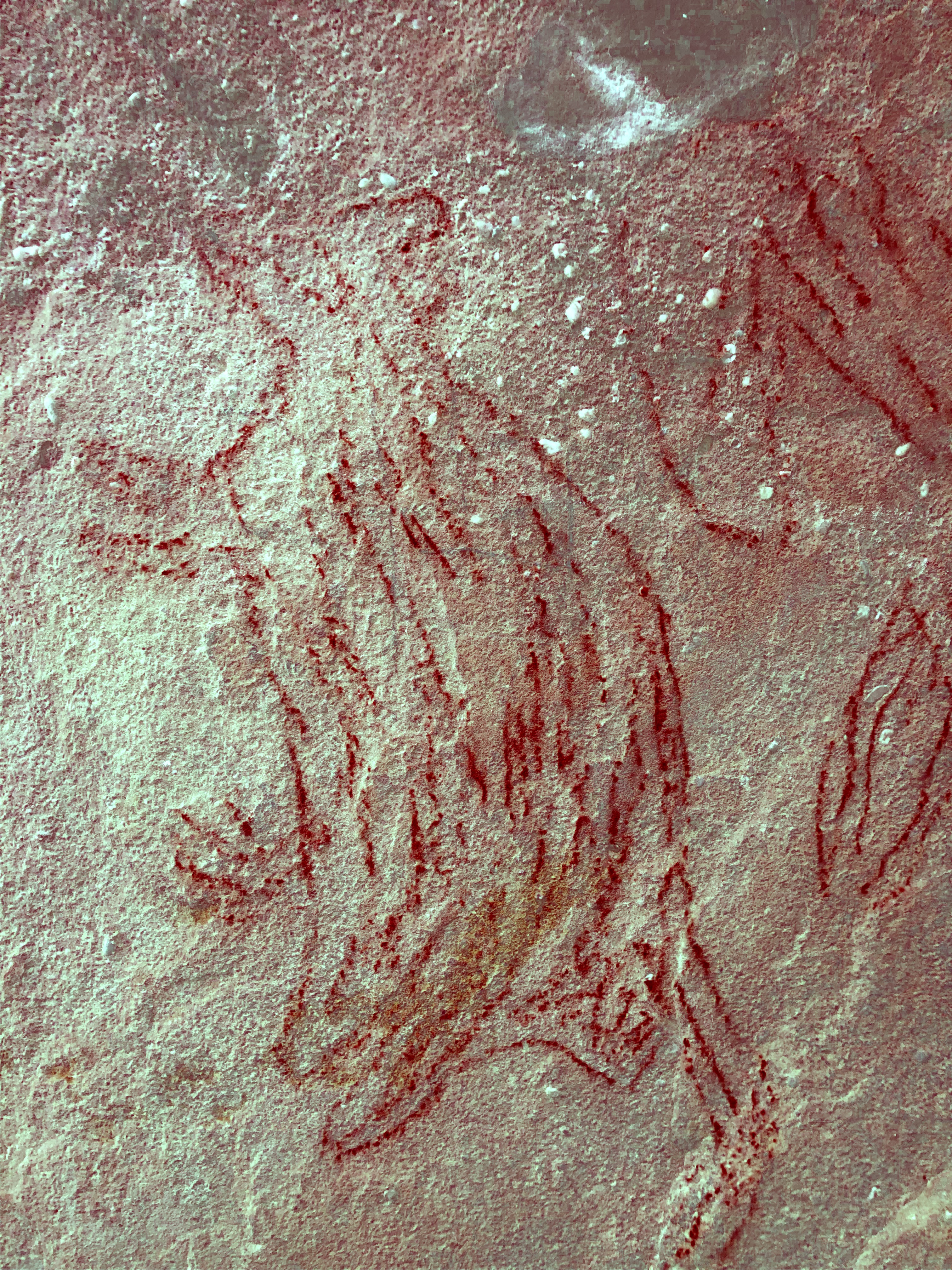 Dharawal sandstone art
Dharawal sandstone art

Council’s Reconciliation Statement was released on 19 May 2003. The statement was created in collaboration with the Aboriginal Advisory Committee. It was signed by Cr Kevin Schreiber, the then Mayor and Mr John Rayner (then Sutherland Shire Council General Manager).
Sutherland Shire Council Reconciliation Statement (2003)
The original inhabitants of the Sutherland Shire came from the Dharawal and Gandangara peoples. They lived in the area for thousands of years prior to the arrival of Europeans and continue to hold a deep attachment to many places within the Shire. Rock engravings, middens and other sites that provide evidence of Aboriginal occupation and spirituality also exist throughout the Shire, including within National Parks, waterways and on what is now private property.
The Sutherland Shire is unique, in terms of Australian history, as Kurnell was the location of the first recorded contact point between Aboriginal people and English colonisers.
Sutherland Shire Council acknowledges that alienation from traditional lands following European settlement had a devastating impact on Aboriginal people and their way of life. These lands provided food, clothing and shelter and remain spiritually and culturally significant to Aboriginal people today.
Sutherland Shire Council also recognises that the impacts of colonisation continue for many Aboriginal people. Today, the levels of access for many Aboriginal people in regard to health, education, employment and housing opportunities are well below the national average.
As well as adopting the Local Government and Shires Associations’ “Statement of Commitment”, an as a mark of respect to our local Aboriginal Community Sutherland Shire Council is sorry for the negative impacts that European settlement has had on Aboriginal people and their way of life and commits to:
- Celebrating the survival of the original inhabitants and those who have moved into the area since European settlement.
- Requesting that the Aboriginal Elders conduct a “Welcoming Ceremony” at official Council functions.
- Promoting an increased awareness and understanding of our Aboriginal culture to strengthen and enrich our community.
- Encouraging Aboriginal and non-Aboriginal people to work together, celebrate their different cultures and go forward together.
- Observing the principle that research into Aboriginal heritage should not be carried out without the informed consent and participation of local Aboriginal communities as research partners and/or stakeholders.
- Providing support for (i) the activities of Aboriginal organisations within the Shire that promote self-determination and reconciliation and (ii) the reconciliation movement.
- Continuing to provide forums such as the Aboriginal Advisory Committee, where Council and representatives of the Aboriginal community can work together in identifying needs and developing strategies to meet such needs.
- Pro-actively seeking to develop and support strategies that produce various opportunities and social equity for Aboriginal people.
- Pro-actively encouraging applications for Council’s community/arts grants from the Aboriginal community.
- Seeking ongoing funding for the provision of the specialist Aboriginal Supplementary Services, including the employment of a Care Worker to ensure the needs of Aboriginal children in child care within the Shire are met.
- Ensuring the needs of Aboriginal people are represented and continuing to seek representation/participation from the Aboriginal community on a range of Council committees.
- Flying the Aboriginal flag daily outside Council’s Administration Centre.
Sutherland Shire Council Reconciliation Statement community response (2003)
In response to Council's statement, Gill Saunders from Gandangara Local Aboriginal Land Council, Jason Ardler from the Aboriginal Advisory Subcommittee and Beryl Timberly-Beller, Dharawal elder signed and endorsed a community response.
The Aboriginal community of Sutherland Shire acknowledge and applaud the commitment made by Sutherland Shire Council, through the Statement of Reconciliation, to improving outcomes for Aboriginal people.
The lands and waters of Sutherland Shire hold great cultural significance for the Dharawal and Gandangara peoples who first occupied, used and drew their identity from them. Sutherland Shire is also a special place to many other Aboriginal and non-Aboriginal people who have settled here in the past 200 years.
We are confident that this statement of Reconciliation provides the basis for improved understanding and celebration of Aboriginal culture and its unique contribution to the heritage of the Shire and all of its residents.
We look forward to building on our already strong relationship with Sutherland Shire Council to promote the economic development and self-determination of Aboriginal people in the Shire and to facilitate reconciliation between all members of our community.
Fundamental to achieving true reconciliation is the inclusion of an apology in the Statement of Reconciliation. We do not regard this as an admission of guilt, but rather an acknowledgment of the impacts of past policy and practice by all levels of government in Australia on the life and cultural expression of Aboriginal people. We consider this a very genuine and meaningful foundation on which we can move forward toward our mutual aspirations for a peaceful, tolerant and prosperous Sutherland Shire.